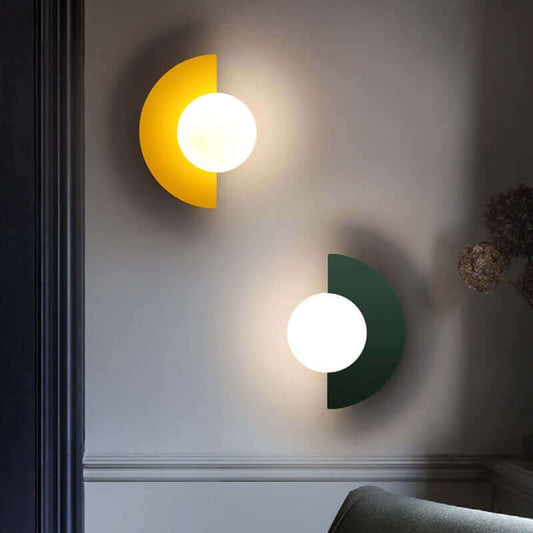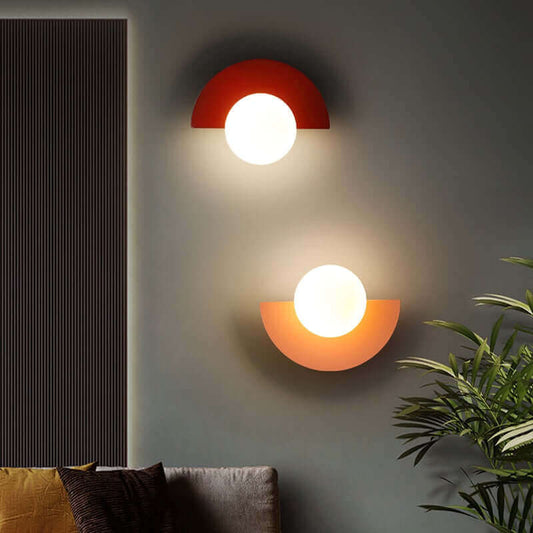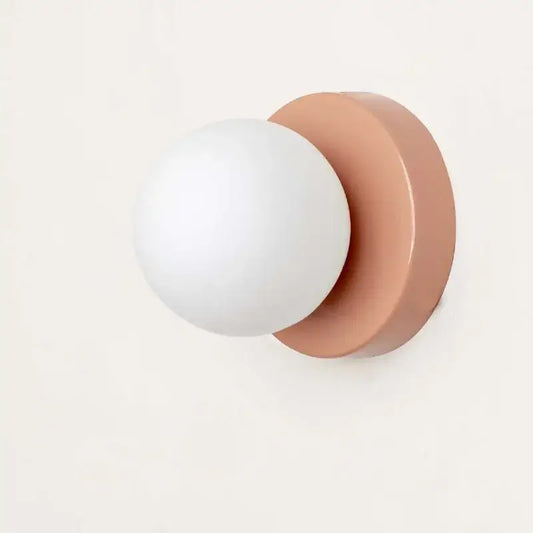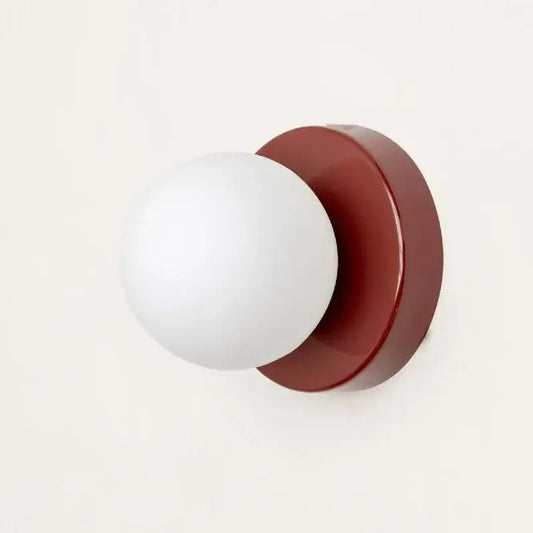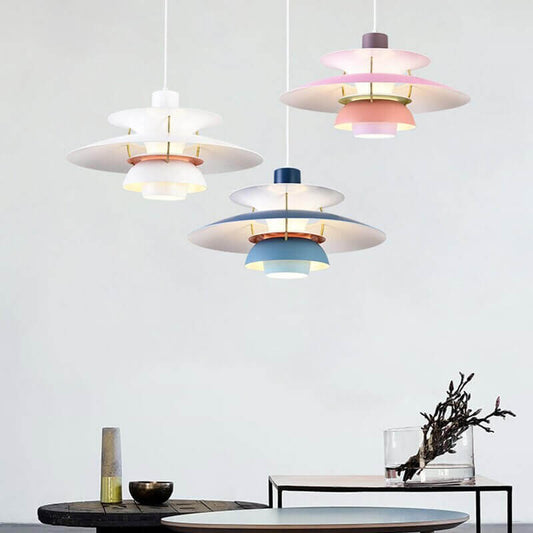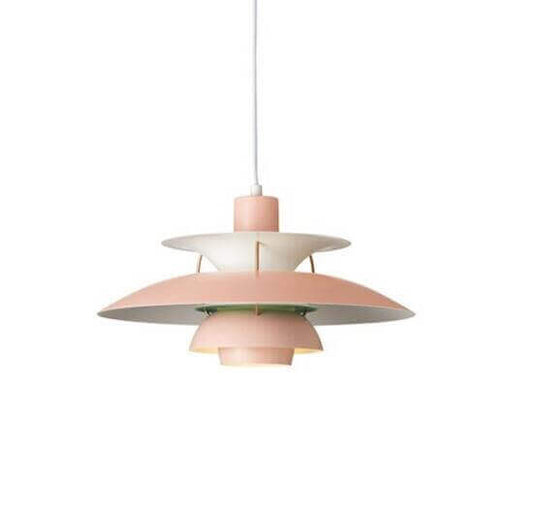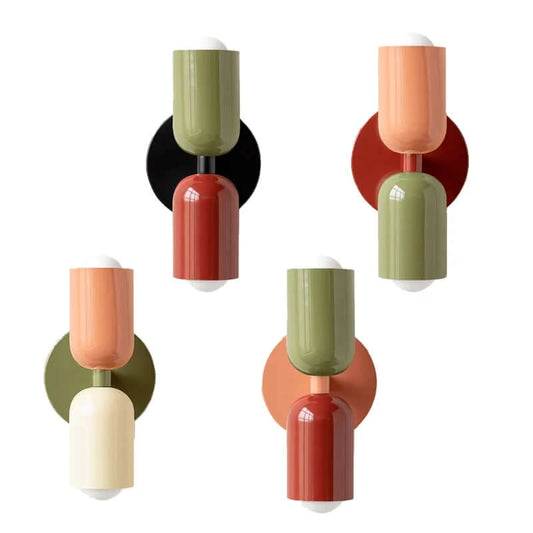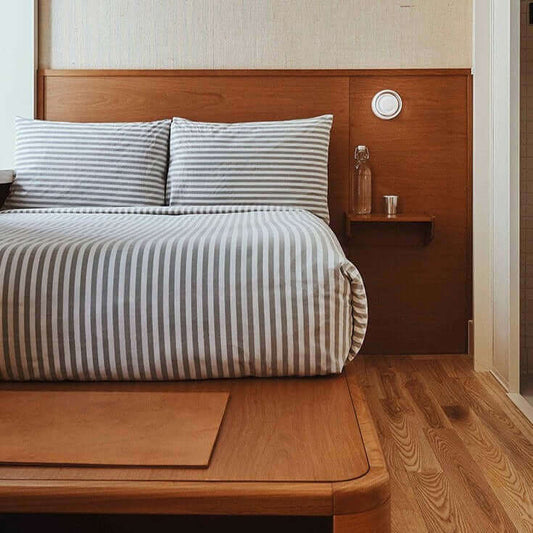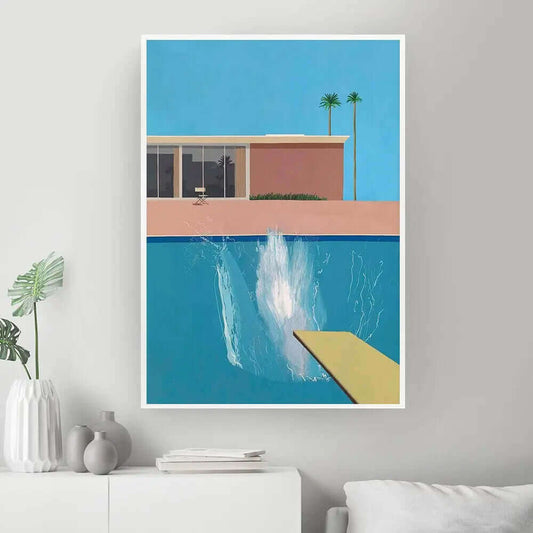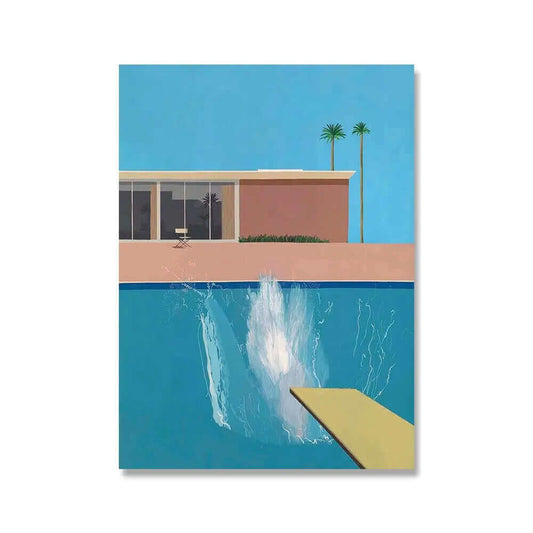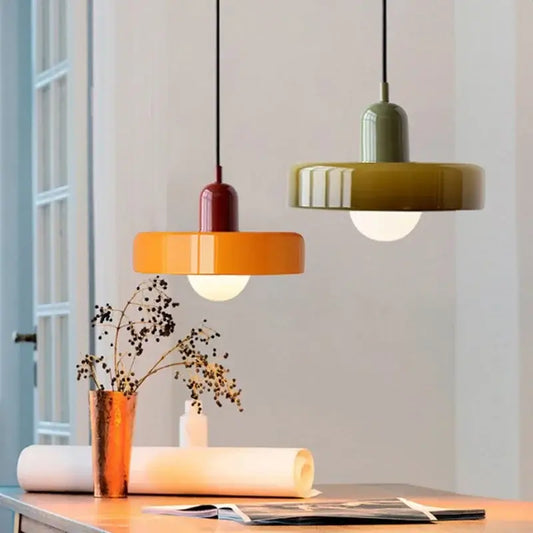1. Introduction to Style and Its Influence on Interior Design Choices
- Overview of the course content and objectives
- Understanding the significance of style in interior design decisions
- The impact of different styles on the overall ambiance of spaces
2. Exploring Popular Architectural and Interior Styles
Welcome to the "Exploring Popular Architectural and Interior Styles" module of our comprehensive Interior Design Course. In this section, we will embark on an exciting journey through a diverse array of architectural and interior styles, each with its unique history, characteristics, and influences. We are purposely starting fairly late in the history of Architecture. We believe the styles that are cover below are those that have had the most influence on today's trends in interior design. By the end of this module, you will have a deeper appreciation for the rich diversity of design styles and be able to draw inspiration from these timeless and contemporary aesthetics.
In-depth Exploration of Each Style
We will delve into the most influential and sought-after architectural and interior styles, allowing you to gain a comprehensive understanding of each one. From the glamorous Art Deco to the minimalist Scandinavian to the sleek Modern styles, we will explore the defining features and hallmarks of each style.
Understanding the Architectural Influences
Architecture and interior design, two disciplines intrinsically linked, have long shared a symbiotic relationship, influencing and inspiring each other across the annals of history. From the grandeur of ancient civilizations to the modernity of contemporary urban landscapes, architecture plays a significant role in shaping interior design styles. Each architectural movement leaves an indelible mark on the principles, aesthetics, and spatial layouts of interiors, breathing life into unique design aesthetics that transcend time.
The Modern Revolution: Form Follows Function
The 20th century brought about a radical shift in architecture and interior design, marked by the modernist movement. Championing the idea that "form follows function," modernist architects embraced simplicity, clean lines, and industrial materials. Interiors featured open-plan layouts, uncluttered spaces, and an emphasis on natural light, mirroring the minimalist aesthetics of modernist architecture.
Postmodernism
This course explores the emergence of Postmodernism as a reaction to the rigidity of modernism in architecture and interior design. Students will delve into the celebration of eclecticism and the playful and daring approach that defined this movement. Through a comprehensive study of architectural designs, interiors, and the incorporation of historical elements, participants will gain insights into the principles and influences of Postmodernism.
Course Outline:
-
Introduction to Postmodernism
Postmodernism emerged as a dynamic and influential architectural and design movement in the late 20th century, offering a profound departure from the rigidity and dogmatism of modernism. This course introduces students to the rich tapestry of Postmodernism by exploring its context, evolution, and key characteristics that distinguish it from its modernist predecessors. Understanding the philosophical underpinnings of Postmodernism is essential to appreciating its playful and daring approach to architecture and design.
Postmodernism was a reaction to the prevailing principles of modernism, which emphasized functionalism, rationality, and a strict adherence to form following function. Architects and designers began to question the perceived limitations of modernism, seeking alternative avenues for creative expression. The course delves into the historical context that gave rise to Postmodernism, including its roots in the 1960s and 1970s when architectural theory underwent a transformative shift.
Central to the exploration of Postmodernism are its key characteristics that distinguish it from modernism. While modernist architecture sought to establish a universal language of design, Postmodernism embraced pluralism and diversity. This course delves into the celebration of eclecticism as a defining feature of Postmodern design, where different architectural styles, historical references, and cultural influences were joyfully blended to create a unique and visually engaging aesthetic.
The rejection of modernism's functionalist approach in favor of an emphasis on symbolism, metaphor, and historical references is a fundamental aspect of Postmodernism. Students will discover how architects and designers infused buildings and interiors with playful and daring elements, challenging traditional notions of what architecture and design could be. These daring elements often manifested in the form of bold shapes, vibrant colors, and the juxtaposition of historical architectural motifs in innovative and unexpected ways.
As the course unfolds, students will explore the fascinating shift from the strict geometric forms and simplicity of modernism to the exuberant diversity and expressive freedom of Postmodernism. This exploration will encompass iconic architectural works and interior designs that embody the spirit of Postmodernism, from the works of Robert Venturi, Michael Graves, and Ricardo Bofill to the vibrant landscapes of postmodern urban planning.
Through an interdisciplinary lens, the course will also examine how Postmodernism influenced other artistic disciplines, including visual arts, literature, and film. This intersectional exploration will highlight the interconnectedness of creative movements and the profound impact Postmodernism had on shaping contemporary cultural expressions.
In conclusion, this course serves as a comprehensive and illuminating introduction to Postmodernism, a transformative movement that challenged the conventions of modernism and celebrated eclecticism, playfulness, and daring in architecture and design. Students will gain a deep appreciation for the philosophical and aesthetic underpinnings of Postmodernism, enabling them to engage with the complexity and richness of this pivotal period in architectural history. -
The Playful Architectural Designs
Postmodernism brought forth a wave of architectural designs that challenged conventions, celebrating an exuberant departure from the austere aesthetics of modernism. This section of the course delves into iconic Postmodern architectural works that boldly embraced playful and daring elements, redefining the boundaries of architecture and design.
Summary of Case Studies:
-
Robert Venturi: Robert Venturi, a pioneering figure in Postmodern architecture, believed that "less is a bore," in direct contrast to modernism's "less is more" mantra. One of his most celebrated works, the Vanna Venturi House, completed in 1964, is a prime example of his playful approach. The house, located in Pennsylvania, stands as a manifesto of Postmodern ideas, featuring bold geometric forms and a whimsical facade with a symbolic broken pediment that humorously challenges classical conventions. Venturi's designs celebrated complexity and the "decorated shed" concept, where buildings are adorned with symbolic elements and signs, fostering a dialogue between architecture and its context.
-
Michael Graves: Michael Graves, renowned for his eclectic design approach, became a leading voice in Postmodern architecture. The Portland Building, completed in 1982 in Oregon, exemplifies his innovative and colorful style. Its playful facade combines elements of classicism, Art Deco, and modernism, creating a visually engaging composition that revitalizes the urban landscape. Graves embraced vibrant colors, anthropomorphic elements, and historical references, challenging the notion of buildings as monolithic and impersonal structures. His designs celebrated individuality and resisted the austere uniformity of modernist architecture.
-
Ricardo Bofill: Ricardo Bofill, a Spanish architect, is celebrated for his imaginative and surreal designs that blend historical motifs with contemporary elements. La Fabrica, an abandoned cement factory in Spain transformed into Bofill's personal residence and studio, stands as a remarkable Postmodern creation. Completed in 1975, the building's industrial past blends harmoniously with new elements, creating a captivating dialogue between history and modernity. Bofill's designs playfully reinterpreted architectural history, combining classical and vernacular references to infuse his creations with a sense of timelessness and poetic expression.
These case studies showcase how architects like Robert Venturi, Michael Graves, and Ricardo Bofill fearlessly defied convention, embracing eclecticism and historical references in their architectural designs. Their works embody the playful and daring spirit of Postmodernism, reinvigorating architectural discourse and inspiring future generations of designers to challenge the status quo and celebrate the rich tapestry of design possibilities. Through their innovative and imaginative creations, these architects left an indelible mark on the architectural landscape, paving the way for a more expressive and dynamic era in the history of design.
-
-
Historical References and Juxtapositions
The incorporation of historical references in Postmodern architecture allows architects to engage in a rich dialogue with architectural history, challenging and reinterpreting established norms. By drawing inspiration from various historical periods, architects have the creative freedom to juxtapose elements in unexpected and unconventional ways, resulting in designs that are both visually stimulating and conceptually thought-provoking.
References:
- Robert Venturi, the influential architect mentioned earlier, discussed his approach to incorporating historical elements in his works in "Complexity and Contradiction in Architecture" (1966). This seminal book paved the way for Postmodern architecture by challenging modernism's simplistic ideals.
- James Stirling, another significant Postmodern architect, contributed to the discourse on architectural pastiche and historical references. His works, such as the Neue Staatsgalerie in Stuttgart, Germany, display a masterful fusion of historical and contemporary elements.
Websites:
- The Getty Research Institute (www.getty.edu/research) houses a vast collection of architectural archives and resources, including documents related to Postmodernism and architectural pastiche.
- ArchDaily (www.archdaily.com) offers a rich selection of articles and projects that explore the concept of architectural pastiche and the integration of historical elements in contemporary designs.
- The Royal Institute of British Architects (RIBA) (www.architecture.com) provides online exhibitions and resources on Postmodern architecture and its historical references.
Examples of buildings that blend historical styles with contemporary elements:
- The Louvre Pyramid, designed by I.M. Pei, is an iconic example of architectural pastiche. Completed in 1989, the pyramid juxtaposes a bold modernist form with the historic Louvre Museum in Paris, France, creating a visually striking entrance that symbolizes the fusion of history and modernity.
- The Guggenheim Museum Bilbao, designed by Frank Gehry, is a prominent Postmodern work that skillfully blends organic and sculptural forms with a nod to the industrial heritage of the city. Opened in 1997, the museum showcases a harmonious coexistence of historical references and cutting-edge design.
- The St. Pancras Renaissance Hotel in London, UK, masterfully combines Victorian Gothic architecture with contemporary features. Restored in 2011, the building exemplifies the blending of historical grandeur with modern luxury.
In conclusion, the incorporation of historical references and the art of architectural pastiche play a pivotal role in the daring and playful aesthetic of Postmodern architecture. Through the analysis of influential architects, books, and examples of buildings, students will gain a profound understanding of how historical elements are ingeniously woven into contemporary designs, challenging conventional notions of architectural expression and creating visually captivating and intellectually stimulating spaces.
Contemporary Applications of Postmodern Principles
While Postmodernism emerged as a distinct architectural movement in the late 20th century, its principles and influence continue to shape contemporary architecture and interior design. This section of the course delves into how Postmodern design principles persistently resonate in the contemporary design landscape, sparking a resurgence of interest in eclecticism and historicist references in recent projects.
-
Continuity of Postmodern Design Principles: Despite the passage of time, Postmodern design principles have not been confined to a specific era but have transcended into contemporary practice. Architects and designers today continue to challenge traditional norms and embrace the spirit of eclecticism, just as their Postmodern predecessors did. The contemporary applications of these principles showcase a refreshing departure from the minimalism that dominated the early 21st century and a return to more expressive, playful, and daring architectural forms.
-
Blending of Historical and Contemporary Elements: In contemporary architecture, the blending of historical styles with contemporary elements remains a prevalent trend. Architects are increasingly drawn to the reinterpretation of classic architectural forms, such as arches, domes, and ornate details, integrating them into cutting-edge designs. This fusion of historical and contemporary elements results in visually captivating buildings that bridge the gap between the past and the present.
-
Eclecticism in Interior Design: Within contemporary interior design, there is a notable resurgence of eclecticism. Designers are embracing the freedom to mix and match diverse styles, periods, and cultural influences to create unique and personalized spaces. This departure from a strict adherence to one particular design language allows for richer narratives and more engaging environments that reflect the diverse tastes and interests of clients.
-
Playful Use of Color and Symbolism: Contemporary architects and designers are channeling the playful and daring approach of Postmodernism through the imaginative use of color and symbolism. Bold and vibrant colors are increasingly seen on building facades, interiors, and public spaces, evoking a sense of energy and joy. Symbolism is also being cleverly integrated, as designers explore the potential of architectural elements to carry meaning and narrative, resonating with users on a deeper level.
-
Embracing Context and Culture: As with Postmodern architecture, contemporary designers are embracing the importance of context and culture in their projects. Instead of imposing a one-size-fits-all approach, architects and designers are sensitive to the local culture, history, and environment. This contextual awareness enriches contemporary design and fosters a deeper connection between buildings and their surroundings.
-
Sustainability and Adaptability: Contemporary architects are increasingly drawn to the sustainable principles espoused by Postmodernism. The emphasis on adapting existing structures and utilizing local materials aligns with the contemporary focus on sustainability and environmentally conscious design. Adaptive reuse and repurposing of buildings have become key strategies in contemporary architecture, reflecting the enduring relevance of Postmodern ideas.
References:
-
"Postmodern Architecture: A Comprehensive Survey" (2006) by Heinrich Klotz offers valuable insights into Postmodern principles and their influence on contemporary architecture.
-
Architectural Digest (www.architecturaldigest.com) and Dezeen (www.dezeen.com) feature articles and projects that exemplify contemporary applications of Postmodern design principles.
In conclusion, the impact of Postmodernism extends far beyond its initial emergence, as its design principles continue to resonate and shape contemporary architecture and interior design. The contemporary application of Postmodern ideas showcases a refreshing departure from the rigidity of previous design paradigms, inviting a new era of eclecticism and historicist references. As architects and designers explore the limitless possibilities of combining historical elements with contemporary expressions, they pay homage to the spirit of Postmodernism while forging ahead with a bold and innovative design language.
References:
- Jencks, Charles. (1991). "The Language of Post-Modern Architecture." Rizzoli.
- Venturi, Robert, Scott Brown, Denise, and Izenour, Steven. (1977). "Learning from Las Vegas." The MIT Press.
- Ada Louise Huxtable. (1997). "Architecture: Anyone's New Urbanism." The New York Times.
- Goldhagen, Sarah Williams. (1997). "Derrida's Architecture." The MIT Press.
- Postmodernism: Style and Subversion 1970-1990 (Exhibition Catalog). Victoria and Albert Museum.
- Hollier, Denis. (1987). "Against Architecture: The Writings of Georges Bataille." The MIT Press.
- Postmodern Architecture: A Comprehensive Survey. (2006). Thames & Hudson.
- Jencks, Charles. (2002). "The New Paradigm in Architecture: The Language of Postmodernism." Yale University Press.
Websites:
- The Postmodern Museum: www.postmodernmuseum.com
- The Museum of Modern Art (MoMA): www.moma.org
- Architectural Digest: www.architecturaldigest.com
- Dezeen: www.dezeen.com
- ArchDaily: www.archdaily.com
Contemporary Architecture and Interior Synergy
In the dynamic and ever-evolving contemporary design landscape, architecture and interior design work in harmony, drawing inspiration from sustainability, technology, and cultural diversity. This symbiotic relationship between architecture and interiors results in spaces that are not only aesthetically pleasing but also environmentally responsible and technologically advanced.
- Sustainable Architecture and Eco-Conscious Interiors: Sustainability has become a driving force in contemporary architecture and interior design. Architects are increasingly incorporating eco-friendly principles into their projects, with a focus on reducing environmental impact and promoting energy efficiency. Green building practices, such as passive design, solar panels, and rainwater harvesting systems, are integrated into the architectural design to optimize resource usage and minimize waste. This eco-conscious approach extends to the interiors, where designers opt for renewable and recycled materials, low-VOC paints, and energy-efficient lighting solutions. The result is a seamless connection between the architecture and interior spaces, creating an environmentally responsible and healthy living environment.
References:
- "Sustainable Construction: Green Building Design and Delivery" by Charles J. Kibert delves into sustainable architectural practices.
- The U.S. Green Building Council (USGBC) (www.usgbc.org) provides valuable resources and certifications for sustainable building practices.
- Technological Integration and Smart Home Systems: Advancements in technology have significantly impacted both contemporary architecture and interior design. Modern technology allows for the seamless integration of smart home systems that enhance the comfort, convenience, and functionality of interiors. Home automation systems can control lighting, heating, cooling, security, and entertainment through smartphone apps or voice commands, creating personalized and user-friendly living spaces. Architects and designers are increasingly incorporating the infrastructure for such technology during the architectural design phase, ensuring a seamless integration of smart systems within the built environment.
References:
- "The Art of Smart Homes and Home Automation" by Jennifer Roberts explores the integration of technology in interior design.
- The Consumer Technology Association (CTA) (www.cta.tech) offers insights into the latest home automation technologies.
- Cultural Diversity and Inclusive Design: Contemporary architecture and interior design celebrate cultural diversity and inclusivity. Architects and designers are attuned to the cultural nuances and needs of diverse communities, seeking to create spaces that are respectful and inclusive of all users. The interiors reflect a blend of cultural influences, materials, and design elements that resonate with the occupants' identities and heritage. This inclusive approach fosters a sense of belonging and connection within the built environment.
References:
- "Inclusive Design: A Universal Need" by Roger Coleman discusses the importance of inclusive design principles.
- The International Association for Universal Design (IAUD) (www.i-cud.org) advocates for universal design practices.
In conclusion, contemporary architecture and interior design have embraced a synergy that emphasizes sustainability, technology integration, and cultural diversity. The integration of sustainable principles in architecture extends to eco-conscious interiors, creating environments that prioritize environmental responsibility and occupant well-being. Technological advancements enable seamless smart home systems that enhance the functionality and comfort of interior spaces. Moreover, the celebration of cultural diversity and inclusive design principles ensures that contemporary spaces resonate with the diverse identities and needs of their occupants. This symbiotic relationship between architecture and interiors in the contemporary landscape paves the way for innovative and transformative design solutions that enrich the lives of those who inhabit them.
Unleashing Your Creativity
As you learn about these popular styles, we encourage you to unleash your creativity and experiment with elements from different styles. Mixing and matching characteristics from various aesthetics allows you to create eclectic and personalized spaces that truly reflect your individual taste and personality.
2.1 Art Deco Style: Architectural & Interiors
Welcome to the mesmerizing world of Art Deco Style: Architectural & Interiors. This enchanting design movement, which flourished in the 1920s and 1930s, continues to captivate hearts with its opulence, glamour, and timeless allure. In this exploration, we will delve into the captivating architectural marvels and exquisite interior spaces that define the Art Deco era. From lavish skyscrapers and iconic landmarks to sumptuous interiors adorned with luxurious materials and mesmerizing geometric patterns, join us on a journey through this celebrated design movement that continues to inspire and influence the world of architecture and interior design to this day. Let us unravel the elegance, sophistication, and innovation that define the enduring legacy of Art Deco Style.2.2 Victorian Style: Architectural & Interiors
2.3 Scandinavian Style: Architectural & Interiors
Welcome to the captivating world of Scandinavian Style: Architectural & Interiors! In this enriching course, we invite you to embark on a journey into the heart of Scandinavian design, exploring the mesmerizing blend of architecture and interior aesthetics that define this iconic style. From the timeless allure of warm color palettes to the seamless integration of nature-inspired elements, we will unravel the key principles and features that make Scandinavian design so revered and sought after. Whether you are an aspiring interior designer, a seasoned architect, or simply an enthusiast of beautiful spaces, this course will provide you with a comprehensive understanding of Scandinavian style, empowering you to infuse its essence into your own architectural and interior design projects. Get ready to be inspired by the harmonious fusion of simplicity, functionality, and elegance that characterizes Scandinavian Style: Architectural & Interiors.
2.4 Modern Style: Architectural & Interiors
Modern style in architecture and interiors is a design movement that emerged in the early to mid-20th century, characterized by its emphasis on simplicity, functionality, and the use of innovative materials and construction techniques. This style broke away from historical references and embraced a forward-thinking, progressive approach to design. Modern architecture and interiors sought to create spaces that were reflective of the modern age and the ideals of efficiency, rationality, and social progress.
- Modern Architecture: Modern architecture is characterized by clean lines, geometric forms, and the absence of unnecessary ornamentation. It emphasizes the use of industrial materials such as steel, glass, and concrete, which enable the creation of large, open spaces and buildings with a sense of lightness and transparency. The design often features asymmetry, flat roofs, and large windows, blurring the boundaries between the interior and exterior and embracing the surrounding environment.
Key figures in the development of modern architecture include Le Corbusier, Ludwig Mies van der Rohe, and Walter Gropius, who championed the principles of functionalism and the belief that architecture should respond to the needs of the people and the demands of the modern age.
References:
-
A History of Design from the Victorian Era to the Present: A Survey of the Modern Style in Architecture, Interior Design, Indust
Ann Ferebee (Author) Jeff Byles (Author) - "The International Style" by Henry-Russell Hitchcock and Philip Johnson explores the development of modern architecture.
- Modern Interiors: Modern interior design complements the principles of modern architecture with its focus on simplicity, functionality, and minimalism. The interiors feature open-plan layouts, allowing for flexibility and a sense of spaciousness. Furniture design in the modern style is often characterized by sleek lines, geometric shapes, and a preference for materials like steel, leather, and plywood.
A key aspect of modern interiors is the integration of form and function. Furniture and decor are designed to serve practical purposes while also contributing to the overall aesthetic of the space. Modern interiors also embrace natural light, with large windows and strategically placed openings that illuminate the spaces and create a connection with the outdoors.
References:
- "The Eames Lounge Chair: An Icon of Modern Design" by Martin Eidelberg explores the iconic modern furniture design by Charles and Ray Eames.
- "Scandinavian Modern Design: 1880-1980" by Charlotte and Peter Fiell delves into the influence of Scandinavian design on modern interiors.
In conclusion, modern style in architecture and interiors represents a pivotal shift in design thinking that emerged in the early to mid-20th century. Its emphasis on simplicity, functionality, and the use of industrial materials paved the way for a new approach to creating spaces that embraced the ideals of the modern age. Both modern architecture and interiors continue to be influential and relevant, inspiring contemporary designers to explore innovative solutions that reflect the spirit of progress and rationality.
2.5 Contemporary Style: Architectural & Interiors
In-depth exploration of each style, its history, key characteristics, and distinguishing features
Understanding the architectural influences and how they translate into interior design
3. Introduction to Interior Design Principles and Elements
Interior design is a fascinating discipline that blends creativity, functionality, and aesthetics to transform spaces into inviting and harmonious environments. Whether it's a home, office, or commercial establishment, interior designers leverage a set of fundamental principles and elements to create spaces that resonate with occupants and leave a lasting impression. In this introductory guide, we will explore the key principles and elements that form the design recipe for crafting visually appealing and well-balanced interiors.
-
The Fundamental Principles of Interior Design
a. Balance: Balance is the distribution of visual weight in a space. It can be achieved through symmetrical, asymmetrical, or radial arrangements. Proper balance ensures that one side of the room does not overpower the other, creating a sense of equilibrium and harmony.
b. Proportion and Scale: Proportion refers to the relationship between different elements in a space, while scale considers their size in relation to the overall space. Correct proportion and scale ensure that furnishings and decor fit harmoniously within the room's dimensions, avoiding a cluttered or sparse appearance.
c. Rhythm and Repetition: Rhythm is the visual flow that guides the eye through a space. Repetition of patterns, colors, or shapes creates a sense of cohesion and movement within the design.
d. Contrast: Contrast adds visual interest by juxtaposing elements that are different in color, texture, shape, or size. It can highlight focal points and create depth and dynamism in the design.
e. Emphasis and Focal Point: Emphasis draws attention to a specific area or element within the room, creating a focal point. This element serves as the centerpiece of the design and anchors the overall composition.
-
The Essential Elements of Interior Design
a. Color: Color is a powerful tool in interior design, evoking emotions and setting the tone for a space. Understanding color theory, such as complementary and analogous color schemes, allows designers to create the desired ambiance.
b. Texture: Texture adds tactile interest to a room and can range from smooth and glossy to rough and matte. Combining different textures enhances visual appeal and creates a multi-dimensional experience.
c. Line: Line refers to the direction and flow of the design elements. Horizontal lines suggest stability, while vertical lines create a sense of height. Diagonal lines add dynamism and movement.
d. Light: Proper lighting is essential in interior design. Natural and artificial lighting can dramatically impact the mood and functionality of a space. Using lighting strategically can highlight architectural features and complement the overall design.
e. Space: Space is the foundation of interior design. Understanding the use of positive and negative space allows designers to optimize the layout and create a sense of openness or intimacy as required.
-
The Design Recipe: Creating Harmonious Spaces
Combining the fundamental principles and elements of interior design forms the "recipe" for creating harmonious and aesthetically pleasing spaces. By carefully balancing proportions, considering the interplay of colors and textures, and strategically utilizing lighting, interior designers have the power to transform spaces into reflections of style and personality.
In conclusion, interior design is a dynamic field that relies on fundamental principles and elements to curate visually engaging and functional spaces. Understanding how to achieve balance, proportion, rhythm, contrast, and emphasis, along with mastering the elements of color, texture, line, light, and space, empowers designers to craft harmonious and captivating interiors. With this foundational knowledge, interior designers embark on a journey of creative exploration, transforming empty spaces into vibrant and inspiring places where people can live, work, and thrive.
6. Interior Design - Colour
- Understanding the impact of fashion and colour trends in interior design
- Explanation of colour terminology and basics
- Exploring warm vs. cool colours and their psychological effects
- Creating harmonious colour schemes and using colour to manipulate space
7. Interior Design - Space Planning
- Introduction to space planning and its role in optimizing interior layouts
- Selecting and recommending textiles and fabrics for specific end uses
- Understanding natural and synthetic fibers and their applications in interiors
8. Interior Design - Styling and Staging
- Introduction to the art of styling and staging in interior design
- Step-by-step guide to styling various areas in a home, including coffee tables, side tables, dining tables, and more
- Techniques for styling walls with art and framing to create impactful focal points
Conclusion
Nauradika's Interior Design Course - Empowering Creativity and Excellence
Congratulations to all the students who have successfully completed Nauradika's Interior Design Course! Throughout this transformative journey, we have explored a diverse range of key concepts and techniques, equipping you with the skills and knowledge to excel in the world of interior design. Let's recap the highlights from each module and the key takeaways that will empower you to apply your newfound knowledge in your own interior design projects.
Introduction to Interior Design In, we delved into the fundamentals of interior design, exploring the history, principles, and elements that form the backbone of every successful design. Understanding the historical context of design styles and how they have evolved over time allows you to draw inspiration from various eras and create truly unique and captivating spaces.
Space Planning and Layouts took us on a journey through space planning and layouts, where we learned how to optimize interior spaces for functionality, flow, and visual appeal. Balancing proportions, considering traffic patterns, and creating zones for different activities are essential techniques that will help you craft spaces that cater to the specific needs and desires of your clients.
Colour Psychology and Design Colour psychology played a pivotal role, as we explored the impact of different colours on human emotions and experiences. By understanding the psychological effects of warm and cool colours, as well as the power of creating harmonious colour schemes, you can evoke the desired ambiance and mood in your interior designs.
Textiles, Fabrics, and Materials, we delved into the world of textiles, fabrics, and materials, where we explored the characteristics and applications of natural and synthetic fibers. Mastering the art of selecting the right materials for specific end uses, such as upholstery, curtains, and bedding, enables you to add comfort, style, and personality to your design projects.
Styling and Staging focused on interior design styling and staging, where we learned the art of enhancing aesthetics and creating inviting environments through artful accessorizing, decluttering, and organizing. Understanding the significance of proper lighting and how it sets the mood and ambiance of a space allows you to create captivating and photogenic designs for showcasing properties.
Biophilic Design and Sustainability The final module explored biophilic design and sustainability, highlighting the importance of integrating nature into the built environment and promoting eco-conscious design practices. By harnessing the power of natural elements and sustainable materials, you can create spaces that foster well-being, productivity, and environmental consciousness.
As you embark on your individual interior design projects, remember to embrace your creativity and apply the knowledge and techniques you have acquired throughout this course. Interior design is a fluid and evolving field, and your unique perspective and passion will contribute to the ongoing transformation of spaces around the world.
We encourage you to continue exploring and expanding your skills, staying updated on industry trends and emerging technologies. Remember that the learning journey does not end here - it is a continuous process of growth and exploration.
Once again, congratulations on completing Nauradika's Interior Design Course. May you take this newfound knowledge and create extraordinary spaces that leave a lasting impact on the lives of your clients and occupants. The world of interior design awaits your creative touch!





